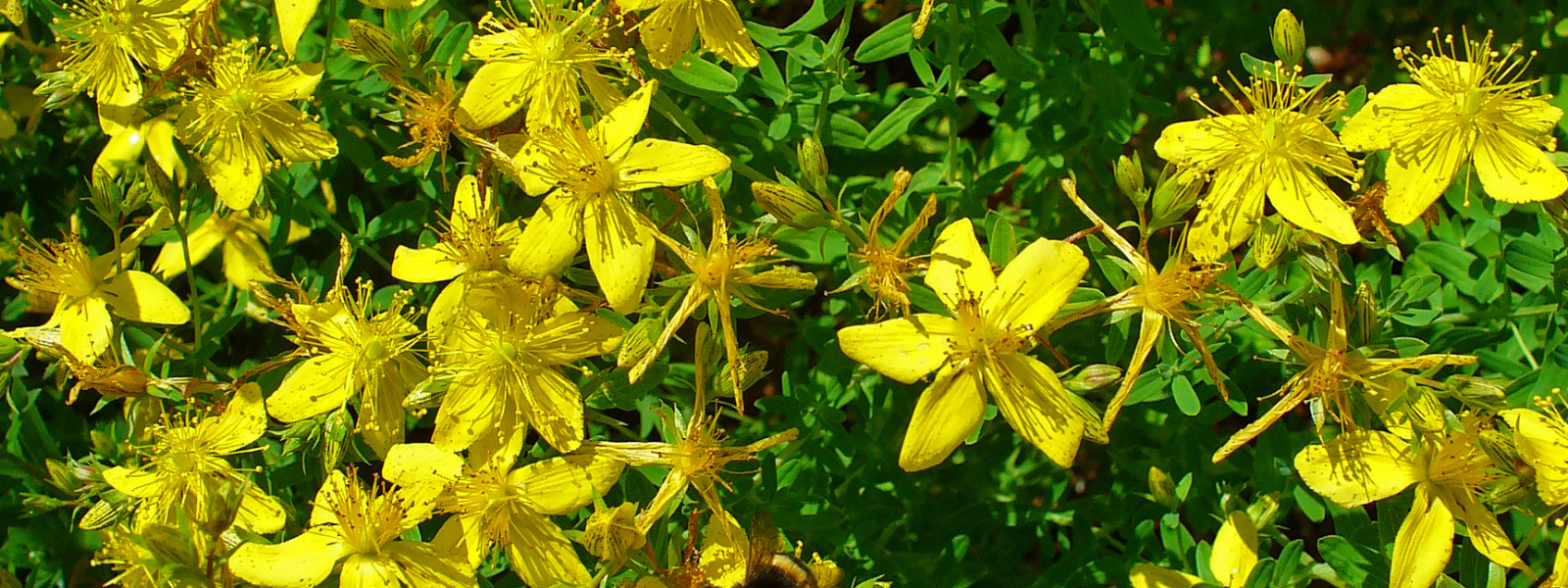
Common Name
St John's wort, SJW, klamath weed, tipton weed, goat weed, and enola weed
Scientific Name
Hypericum perforatum
Family
Hypericaceae
Lifecycle
Perennial
Seasons of Growth
Year-round
Key Distinguishing Feature
Herb with opposite leaves and yellow, star-shaped flowers
Growth Form: St. John's Wort is an upright, branching herb that can reach heights of 30 to 90 centimetres (12 to 36 inches). It often forms bushy clumps.
Leaves: The leaves are opposite, oblong, and have translucent dots on the leaf tissue. When held up to the light, these dots appear as tiny perforations, which give the plant its species name "perforatum."
Flowers: The flowers of St. John's Wort are bright yellow with numerous stamens. They are borne in terminal clusters.
Stems: The stems may be woody at the base and become herbaceous toward the upper parts.
Fruit: The plant produces small, capsule-like fruits that contain numerous seeds.
Ecological Impact:
- While St. John's Wort is native to Europe, it is considered invasive in some regions outside its native range, including parts of North America, Australia, and New Zealand. It can form dense stands and outcompete native vegetation.
- It can negatively impact livestock grazing areas, as it contains compounds that can be toxic to some animals.
Control Methods:
- Control of invasive St. John's Wort often involves a combination of mechanical, chemical, and cultural methods.
- Mechanical methods include hand-pulling, cutting, or mowing to reduce the plant's biomass.
- Herbicides may be used for control, but care must be taken to use them safely and effectively, following local regulations.
- Preventing the spread of St. John's Wort through contaminated soil, equipment, or plant material is crucial.
St. John's Wort is a challenging invasive plant that requires active management to prevent its spread and protect native ecosystems, particularly in areas where it has naturalized outside its native range. Local environmental agencies often provide guidance on the best control practices for this invasive species.




